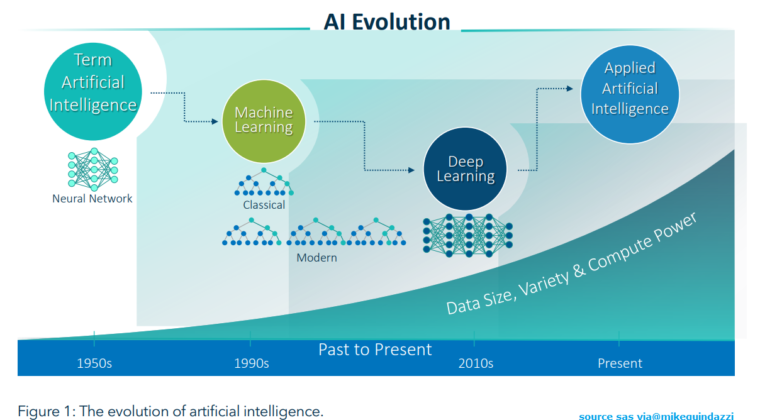
The new age of industry technology is changing manufacturing at an exponential rate. Artificial intelligence (AI) as well as other Industry 4.0 technologies like Machine Learning (ML) are becoming more and more an essential element of Factory 4.0. Large organisations around the globe are already heavily investing in manufacturing AI with Machine Learning to boost every part of their manufacturing processes. This software embedded with AI is aiding businesses in defect detection, supply chain forecasting, and adapting to new business models to a new level. Smart Manufacturing (the blend of industrial AI and IoT), we will see a huge increase in its presence within the industry, over the next three to five years.
The goal for any organization in manufacturing is to consistently improve in output and productivity. Assessing performance is a cyclical process and includes implementing improvement plans and constantly re-assessing results and productivity. Identifying and removing defects as early as possible in the supply chain via effective testing from emerging technologies like AI and ML are making a significant impact on performance and quality of production. By analysing product quality as it is being produced, AI can alert personnel to any defects before they get out of hand. This saves time, money, and materials.
The growing presence of connected devices and algorithms to assist in efficient production is growing daily. ML is a key component of automation and establishing new business models, as well as quality management. The proliferation of technology can sift through a vast amount of digital data, allowing businesses to rely on algorithms to solve large problems in a flash that would take a team of human minds weeks to solve. ML aids businesses in adopting new business models. The supply chain is an ever-evolving entity, and the ability to accurately forecast details in all areas of the chain is one of the most exciting details about AI. AI actively assesses your supply chain volatility and quality as it operates, signifying any issues and predicting necessary tasks before humans could. Forecasting supply chains using AI is allowing business to operate at peak efficiency. The Remaining Useful Life (RUL) of equipment becomes significantly longer. If something needs to be repaired or replaced, technicians will know beforehand and even will know which methods to use to fix the issue.
Generative design is the iterative process that the designer can create the concept whilst, the AI algorithms can process all possible variations to refine and offer optimal solutions for a better outcome based on the variables of the environment. This set of solutions can be evaluated by pre-trained deep learning models, which can add more insights and pick certain options. The process then, can be repeated to explore a very large number of possible permutations beyond what a human alone could accomplish, to arrive at a most effective and optimized design.
AI and ML can improve supply chains by making them interactive to changes on the market beforehand. This in turn, allows managers to improve on their strategic vision by relying on AI suggestions. As estimates become generated by AI based on linking together a number of factors such as political situations, weather, consumer behaviour, and the status of the economy. Staff, inventory, and the supply of materials could be calculated according to predictions.
Sources:
propelplm.com/blog/the-future-of-manufacturing , https://spd.group/machine-learning/ai-and-ml-in-manufacturing-industry/ , https://en.wikipedia.org/wiki/Generative_design
For more information on this topic or about Ti2 please do contact us.
